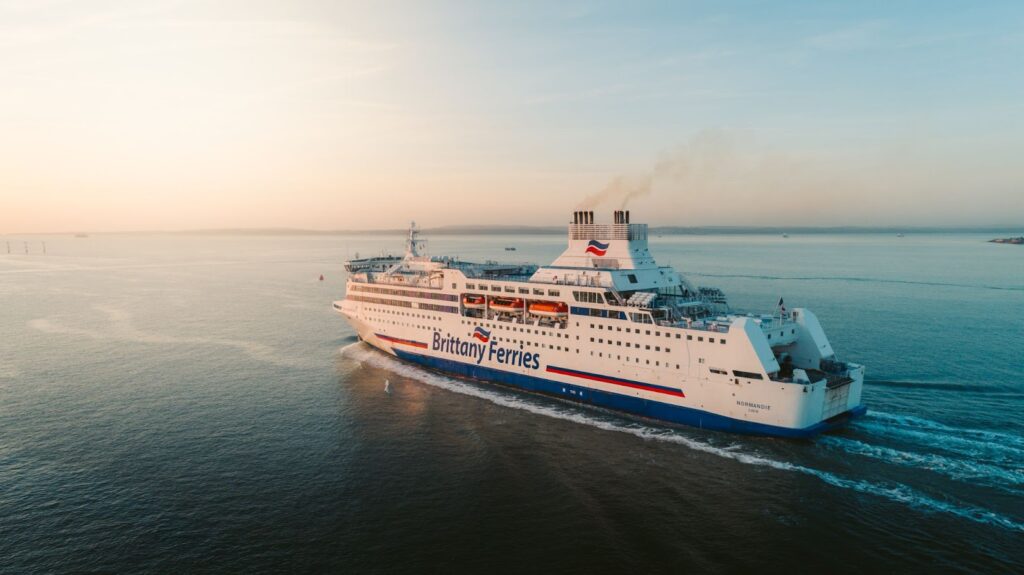
The boat is large, made of iron and steel, and should be very heavy, but it floats on the sea.
So why do boats float on the sea?
This article provides a simple explanation of why ships float.
Contents
Boats float on the sea because of ‘buoyancy’.

Buoyancy is ‘the force required for an object to float’.
The ship can stay afloat on the sea because the force of the water from below pushes the ship up.
So how powerful is that water?
Imagine taking a bath full of hot water and having that water overflow.
The same force as the amount of overflowing water supports the body.
So what about when a larger person takes a bath?
More hot water will overflow, won’t it?
The same applies to ships: the bigger they are, the more ‘buoyant’ they are.
Incidentally, the man who discovered this buoyancy was named Archimedes, and it is called Archimedes’ Principle after him.
Just as an aside, it is said that the very time when ‘Archimedes’ found out about this ‘buoyancy’ was when he was ‘taking a bath
Archimedes was from the 3rd century BC, and he was Italian, but this episode makes you feel closer to him.
How a ship made of heavy iron or steel floats

We talked about the fact that the larger the size, the greater the buoyancy.
What about weight?
Ships made of iron and steel must naturally be heavy, but they float on the sea.
This actually involves ‘density and volume’.
For example, a 100 kg iron ball (the size of a baseball) and a 100 kg large iron pot.
Both weigh the same, but the steel ball actually sinks more.
Simply put, objects of the same weight that are small and clustered together tend to sink, while those that are large and spread out tend to float.
The ‘Archimedes Principle’ applies to this as well: larger object that allow more water out of the bath gets greater buoyancy.
In these circumstances, the ship can float even though it is made of steel and heavy, because of its horizontally large size.
Nevertheless, it will naturally sink if it is too heavy,
Only when size and weight are in balance can the boat stay afloat with the help of “buoyancy.
How big can a ship float?
Then, How big can a ship float?

The answer is ‘infinity’.
Of course, in real life, there are limits to the size of the sea, the law and the places where it can be built and maintained.
However, according to the “Archimedes’ Principle”, a ship of any size can float if it is in balance with its weight.
Incidentally, the world’s largest ship as of 2017 is the Prelude, built in South Korea, which is a whopping 488 m in size, surpassing the Tokyo Tower and the Eiffel Tower.
The ship is in Australia, and doing the job of transporting liquefied natural gas.
Summary
In this article, we explained three reasons why ships float.
- The reason a ship floats is because it has ‘buoyancy’, which is explained in the Archimedes’ Principle.”
- The wider and larger the ‘density and volume’ of an object, the easier it floats.
- Calculations show that any size boat can float, as long as the buoyancy and weight are balanced.
We also manufactures a wide range of marine equipment.
References:
1. 川崎 豊彦,図解入門よくわかる最新船舶の基本と仕組み[第4版],株式会社秀和システム,2020年 第1版
2. 池田 良穂,今日からモノ知りシリーズトコトンやさしい船舶工学の本,日刊工業新聞社,2017年 初版
References site:
NGKサイエンスサイト「水の中では体の大きい方が軽い!?」
建築学生が学ぶ構造力学「アルキメデスの原理とは?1分でわかる意味、証明、浮力との関係、公式」
大和ミュージアム
フナフナ「世界最大の船!?」
SHIP for Everyone





